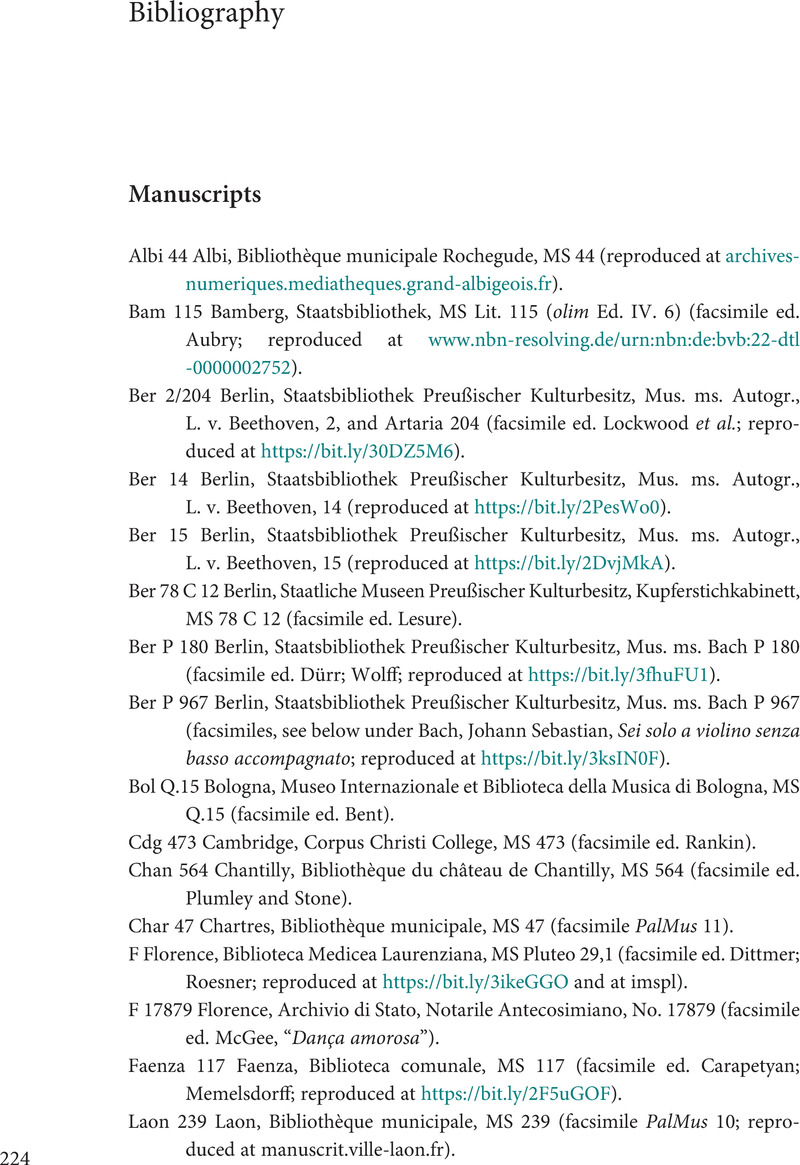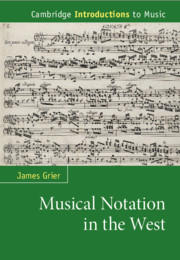Book contents
- Musical Notation in the West
- Musical Notation in the West
- Copyright page
- Dedication
- Contents
- Figures
- Tables
- Musical Examples
- Preface
- Chapter 1 Introduction: Musical Notation as a Symbolic Language
- Chapter 2 Plainsong and the Origins of Musical Notation in the West
- Interlude 1: The Problem with Pitch
- Chapter 3 Polyphony and Rhythmic Notation
- Interlude 2: Rhythm and Metre
- Chapter 4 The Transition to the Modern Era: Instrumental Music and Performing Indications
- Interlude 3: The Score
- Chapter 5 Notational Nuance in the Twentieth Century and the Motives for Notational Innovation
- Coda: The Meaning of Musical Literacy
- Bibliography
- Index
- Cambridge Introductions to Music
- References
Bibliography
Published online by Cambridge University Press: 28 January 2021
- Musical Notation in the West
- Musical Notation in the West
- Copyright page
- Dedication
- Contents
- Figures
- Tables
- Musical Examples
- Preface
- Chapter 1 Introduction: Musical Notation as a Symbolic Language
- Chapter 2 Plainsong and the Origins of Musical Notation in the West
- Interlude 1: The Problem with Pitch
- Chapter 3 Polyphony and Rhythmic Notation
- Interlude 2: Rhythm and Metre
- Chapter 4 The Transition to the Modern Era: Instrumental Music and Performing Indications
- Interlude 3: The Score
- Chapter 5 Notational Nuance in the Twentieth Century and the Motives for Notational Innovation
- Coda: The Meaning of Musical Literacy
- Bibliography
- Index
- Cambridge Introductions to Music
- References
Summary

- Type
- Chapter
- Information
- Musical Notation in the West , pp. 224 - 264Publisher: Cambridge University PressPrint publication year: 2021

